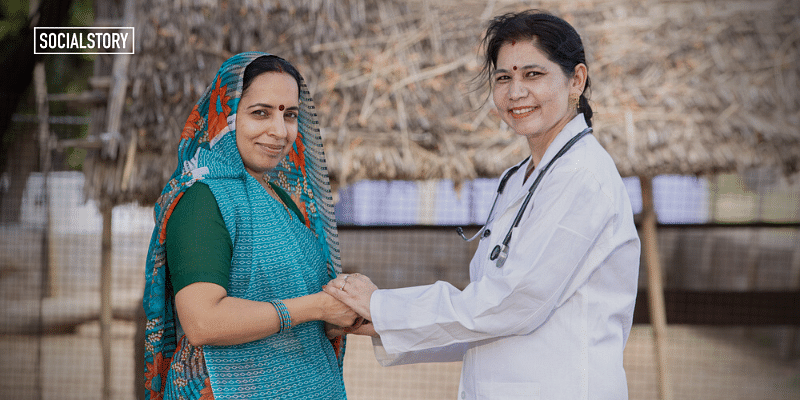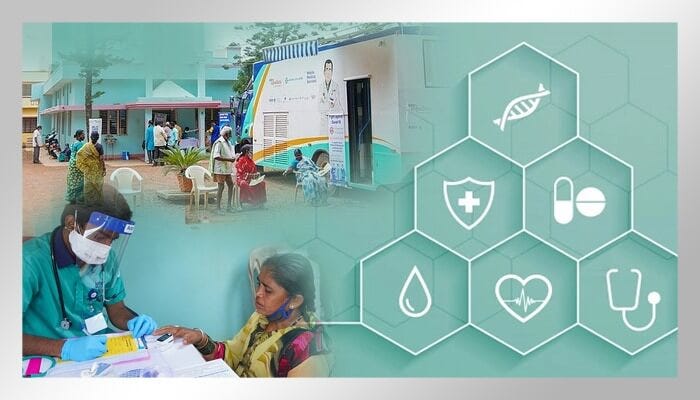- “Empowering Emergency Medicine Physicians”
- “Queue Management Software and Hospitalists in Modern Healthcare”
- “Enhancing-Pediatric-Infectious-Disease-Care”
- “Revolutionizing-Geriatric-Care”
- “Optimizing-Patient-Care-in-Pediatric-Rheumatology”
- “Pediatric-Pulmonology-Care”
- “Revolutionizing-Pediatric-Gastroenterology”
- “Enhancing-Pediatric-Neurology-Care”
- “Optimizing-Pediatric-Cardiology”
- “Enhancing-Pediatric-Endocrinology-Care”
- “Empowering-Neonatologists-with-EMR-Software”
- “Pediatrics-in-Focus”
- “Empowering-Neurologists-with-Electronic-Prescriptions”
- “Streamlining-Dermatology-Practice”
- “Streamlining-Psychiatry-Practice”
- “A-Game-Changer-for-Infectious-Disease-Specialists”
- “Allergist/Immunologist-Practices-with-QME-EMR-and-Hospital-Management-Systems”
- “Empowering-Hematologists-and-Revolutionizing-Healthcare-Management”
- “Optimizing-Healthcare-with-HMIS”
- “Transforming-Healthcare-with-Endocrinologist”
- “Healthcare-Management-with-QMe-EMR-for-Nephrologists”
- “Revolutionizing-Healthcare-Management-with-Cardiologist”
- “Streamlining-Operations-with-Queue-Management-Software”
- “Optimizing-Healthcare-Delivery”
- “Transforming-Healthcare-Management”
- HMIS And Decision Support Systems
- Dengue Unveiled: An Overview of Causes, Symptoms, and Prevention.
- Dengue Fever: Unraveling the Mosquito-Borne Menace.
- HMIS-and-Continuity-of-Care
- Project-Management-for-Successful-HMIS
- Catalysts of Wellness: The Transformative Power of Diagnosis and Screening in Healthcare
- Patient-Data-Management
- Guardians of Healthcare: The Vital Role of Fraud Detection in Ensuring Ethical Care
- Unlocking Insights
- Healthcare in the Digital Age: The History Of Development Of HMIS
- Transforming Healthcare
- Safeguarding-HMIS-Data
- HMIS-Integration-Challenges
- ANXIETY UNVEILED: CONQUERING FEARS AND CULTIVATING CALM.
- BEYOND THE BLUE: EMBRACING LIGHT ON THE PATH OF DEPRESSION.
- BEYOND THE BLUE: EMBRACING LIGHT ON THE PATH OF DEPRESSION.
- HMIS and Resource Allocation
- HMIS Data Accuracy and Integrity
- SOOTHING THE SILENT PAIN: UNDERSTANDING VULVODYNIA.
- Impact of HMIS on OPD Operations
- In Patient Management Through Health Management
- WITHIN THE SHADOWS: UNDERSTANDING BRAIN TUMOURS FROM WITHIN
- HMIS-and-Health-Insurance-Integration
- HMIS-Data-Analytics-for-Preventive-Care
- SILENT INTRUDERS: UNRAVELLING THE MYSTERIES OF PELVIC INFLAMMATORY DISEASE
- BREAKING FREE: OVERCOMING THE HURDLE OF URINARY INCONTINENCE
- “HMIS and Doctor-Patient Communication”
- HEALING INSIGHTS: THE POWER OF THE HOSPITAL MANAGEMENT INFORMATION SYSTEM.
- SOLVING THE OVARIAN PUZZLE:UNDERSTANDING OVARIAN CYST INSIDE OUT
- Usability And User Experience In HMIS
- WARRIOR’S BATTLE: TRIUMPHING OVER UTERINE CANCER
- POLYCYSTIC OVARY PUZZLE: UNRAVELLING THE ENIGMA OF PCOS
- Unlocking-the-Potential-of-HMIS-Data-for Medical-Research-and-Healthcare-Policy-Enhancement
- Feminine Health Unplugged: Empowering Women in Vaginal Infection Awareness
- Revitalizing Feminine Comfort: A Journey Through Vaginal Wellness.
- HMIS Vendor Selection Guide
- UNDERSTANDING FIBROIDS: NAVIGATING THE INTRICACIES OF UTERINE HEALTH.
- Best Practices for Data Migration in Healthcare Management Information Systems (HMIS)
- CONCEIVING HOPE: NAVIGATING THE JOURNEY OF INFERTILITY
- MENSTRUAL IRREGULARITIES: CAUSES AND TREATMENT
- RISING ABOVE: EMPOWERING WOMEN WITH PELVIC ORGAN PROLAPSE
- Leveraging HMIS for Enhanced Public Health Management and Disease Surveillance
- Securing Healthcare Continuity
- Pancreatic Cancer
- Lymphoma
- Leukemia
- Bladder Cancer
- Skin Cancer (Melanoma)
- COLORECTAL CANCER
- All about Prostate Cancer
- Fighting out the Disease of Lung Cancer
- Advances in Breast Cancer Treatment: A Comprehensive Guide
- Autism Spectrum Disorder (ASD)
- EHR SYMPHONY: HARMONIZING HEALTHCARE THROUGH ELECTRONIC RECORDS .
- Understanding Testicular Cancer: Detection, Treatment And Awareness.
- Childhood Obesity
- Kawasaki Disease
- Eczema (Atopic Dermatitis)
- Understanding Bone Cancer: A Brief Overview.
- Virtual Healing: Navigating Healthcare Through Telemedicine and Telehealth.
- Attention-Deficit/Hyperactivity Disorder (ADHD)
- PELVIC PAIN:CAUSES SYMPTOMS AND PREVENTIONS
- Type 1 Diabetes: Causes, Symptoms, and Treatment
- Gastroesophageal Reflux Disease (GERD)
- Battling Pneumonia: Unveiling the Stealthy Invader of the Lungs
- Unravelling the Complexity of Allergic Reactions: Understanding, Managing, and Thriving
- Rashes (Eczema, Dermatitis)
- UNDERSTANDING CERVICAL DYSPLASIA: CAUSES, SYMPTOMS AND MANAGEMENT
- Chicken Pox
- Endometriosis Unmasked: A Closer Look at the Silent Struggle
- Croup
- Hand, Foot and Mouth Disease (HFMD)
- THE DAWNING OF A NEW ERA: EMBRACING THE JOURNEY OF MENOPAUSE
- Urinary Tract Infections (UTIs)
- Strep Throat (Streptococcal Pharyngitis)
- Understanding Otitis Media(Ear Infection)
- 28th July In medical history!!
- Influenza (Flu) - Symptoms, Prevention and Management
- 27th July In medical history!!
- Respiratory Syncytial Virus (RSV) Infection
- SIGNIFICANCE AND ADVANTAGES OF HMIS: A DETAILED ANALYSIS
- Beyond Boundaries: Transforming Healthcare with Virtual Reality
- TRACK YOUR LIFE : A DETAILED UNDERSTANDING ON HEALTH MONITORING SYSTEM
- EXPLORING BENEATH THE SURFACE: UNDERSTANDING BARTHOLIN CYSTS AND ABSCESSES
- GUARDING GUT HEALTH: YOUR GUIDE TO POTENTIAL CROHN’S DISEASE PREVENTION.
- PATHWAYS OF HOPE: NAVIGATING THE CHALLENGES OF ESOPHAGEAL CANCER
- Gastric Battles: Confronting Stomach Cancer Head-On.
- HMIS IN SMALL CLINICS: A STEP TO A BETTER FUTURE
- Harmonizing Your Cycle: A Journey to Menstrual Health and Balance.
- Respiratory Syncytial Virus (RSV) Infection
- GUARDING OUR INTIMATE WORLD: A CLOSER LOOK AT STI
- Real-World HMIS Implementation Case Studies: Using Data to Transform Healthcare
- Gastroenteritis (Stomach Flu)
- Asthama - The Anatomy Of Breathing
- Influenza - A Silent Intruder
- Breast Cancer
Challenges and Benefits of Implementing HMIS in Rural and Remote Healthcare Settings
Challenges and Benefits of Implementing HMIS in Rural and Remote Healthcare Settings
Utilizing Healthcare Management Information Systems (HMIS) has become a crucial strategy for improving healthcare services across the globe. These systems are essential for effective data management, well-informed choices, and enhanced patient care. They could have a considerable impact on healthcare settings in rural and distant areas, where access to and the caliber of medical care are frequently subject to significant obstacles. This article examines the many advantages of using HMIS in such settings, from simplified data gathering to improved patient care, as well as the many difficulties that stand in the way of its seamless integration. HMIS may be able to transform healthcare delivery in rural areas by tackling these issues with strategic solutions, which would ultimately lead to healthier and more resilient communities.
Benefits of Implementing HMIS in Rural Healthcare

Enhanced Data Collection and Management
HMIS transforms data management and collecting in rural healthcare, allowing for easy record-keeping and effective patient tracking. Healthcare professionals may access vital information instantly by digitizing medical histories and appointments, enabling precise diagnosis and individualized treatment strategies. By streamlining administrative processes and improving patient care, this transformation makes sure that crucial medical information is easily accessible for well-informed decision-making.
Improved Decision-Making
HMIS enables well-informed decision-making in rural healthcare settings by giving quick access to thorough patient data. Healthcare professionals may examine trends, spot patterns, and allocate resources wisely thanks to this data-driven strategy. Evidence-based techniques are made easier to implement by real-time insights into patient histories, treatment outcomes, and demographic trends, thereby raising the standard of care. HMIS also helps with resource forecasting and predictive modeling for disease outbreaks. By utilizing these data, healthcare managers and policymakers may develop focused interventions, allocate resources more effectively, and make educated decisions that will ultimately enhance healthcare services and results in remote places.
C. Enhanced Patient Care
Through cutting-edge functionality, HMIS stimulates improved patient care in distant healthcare settings. Patients have better access to medical expertise and can consult with doctors remotely by using a digital platform that removes geographic restrictions. The system also guarantees quick access to thorough medical records, promoting precise diagnoses and individualized treatment regimens. Holistic patient management is facilitated by this smooth information flow amongst healthcare professionals. The promotion of continuity of care is furthered through prompt notifications and reminders for follow-up appointments and medication adherence. HMIS enables healthcare professionals to provide better-quality, patient-centric services, and it also elevates the healthcare experience for all patients, regardless of where they are.
Public Health Monitoring
HMIS is essential for enhancing public health monitoring in the context of remote and rural healthcare systems. Early illness outbreak and pattern detection is made possible by the system’s ability to collect and analyze health data from many sources. Potential epidemics can be quickly identified and responded to, allowing for timely interventions and mitigation measures. Additionally, HMIS supports effective management of immunization campaigns and preventative healthcare programs. The system’s real-time capabilities help health officials keep track of illness patterns, allocate resources efficiently, and create policies based on the best available data to protect community health. HMIS makes a substantial contribution to illness prevention, disease control, and the general well-being of populations in disadvantaged areas through this holistic approach to public health surveillance.
Challenges of Implementing HMIS in Rural Healthcare

There are numerous difficulties involved in implementing HMIS in rural healthcare facilities. Inadequate infrastructure, encompassing limited internet connectivity and electricity supply, hampers system functionality. A scarcity of skilled personnel capable of operating and maintaining HMIS impedes its effective utilization. Low digital literacy levels among healthcare staff and local communities further hinder adoption. Due to the possibility of breaches and unauthorized access, data security and privacy issues are raised. Integrating HMIS with existing systems, often outdated or non-standardized, presents interoperability obstacles. To overcome these obstacles, substantial infrastructure investments, specialized training programs, strict data security procedures, and strategic integration plans that take into account the particular requirements and restrictions of rural settings are all necessary.
Strategies to Overcome Challenges

Infrastructure Improvement
Successful HMIS implementation in rural healthcare depends on addressing the problem of insufficient infrastructure. This entails making investments in dependable power sources, internet access, and the appropriate hardware and software. Building a solid technological base guarantees smooth data transfer, storage, and access, improving system functionality overall. Rural healthcare facilities can fully utilize the capabilities of HMIS, resulting in improved data management, greater patient care, and more effective healthcare service delivery, by giving infrastructure upgrading top priority.
Training and Capacity Building
To overcome obstacles during HMIS adoption in rural healthcare, training and capacity building are essential. Programs for specialized training are necessary due to the lack of trained workers. These programs ought to prioritize local residents as well as medical professionals, promoting digital literacy and competence in HMIS use. Healthcare personnel may benefit from workshops, seminars, and practical training sessions that help them to successfully traverse the system. Simultaneously, community-level training ensures that patients and local stakeholders can engage with the technology confidently. Healthcare facilities can improve healthcare quality in rural and remote areas by developing a skilled user base, maximizing the advantages of HMIS, streamlining procedures, and enabling data-driven decision-making.
Data Security Measures
When implementing HMIS in rural healthcare, it is crucial to have strong data security mechanisms. Sensitive patient information is protected from unwanted access and breaches via the implementation of encryption, access controls, and frequent audits. Security is further improved by educating healthcare personnel about data protection and best practices. Building a thorough security framework in conjunction with cybersecurity professionals fosters trust among employees and patients. Rural healthcare institutions can improve healthcare services without jeopardizing patient privacy by putting a priority on data security. This reduces risks, maintains confidentiality, and fosters a secure environment for using HMIS.
Gradual Integration
The secret to a successful adoption of HMIS in rural healthcare is to use a progressive integration strategy. Rather than abrupt changes, phased integration minimizes disruptions to existing systems. It enables a controllable rate of acclimatization for the medical team to the new technology. This method makes it easier to identify problems, fix them, and make effective improvements. Additionally, it makes it possible for smooth data sharing and interoperability between various healthcare facilities. Rural healthcare facilities can adopt HMIS with less resistance by embracing incremental integration, maximizing its advantages while limiting potential drawbacks.
Case Studies of Successful HMIS Implementation in Rural Settings
Case examples demonstrate how HMIS can revolutionize rural healthcare. Through the integration of telemedicine, barriers to specialist consultations in rural communities were removed. Patients received expert care without traveling long distances. Additionally, illness surveillance in underserved areas improved. Early detection of outbreaks was made possible through real-time data collection and analysis, allowing for quick actions. This controlled pandemic spread and managed resource use. These case studies demonstrate how HMIS enhances patient outcomes, empowers healthcare professionals, and supports remote public health programs. They emphasize how HMIS can be tailored to solve particular problems encountered by rural populations, illuminating its potential to transform healthcare delivery.
Conclusion
In conclusion, there is tremendous potential for HMIS application in rural healthcare settings. The advantages of better data management, informed decision-making, and improved patient care outweigh the difficulties presented by limited infrastructure, training gaps, and security issues. Rural healthcare facilities can take advantage of HMIS’s revolutionary potential by proactively addressing these issues through infrastructure investment, training programs, data security measures, and progressive integration. The case studies presented illustrate its accomplishments in overcoming regional constraints and enhancing public health programs. HMIS has the power to transform rural healthcare by ensuring equal access to high-quality services and healthier communities.
- “Empowering Emergency Medicine Physicians”
- “Queue Management Software and Hospitalists in Modern Healthcare”
- “Enhancing-Pediatric-Infectious-Disease-Care”
- “Revolutionizing-Geriatric-Care”
- “Optimizing-Patient-Care-in-Pediatric-Rheumatology”
- “Pediatric-Pulmonology-Care”
- “Revolutionizing-Pediatric-Gastroenterology”
- “Enhancing-Pediatric-Neurology-Care”
- “Optimizing-Pediatric-Cardiology”
- “Enhancing-Pediatric-Endocrinology-Care”
- “Empowering-Neonatologists-with-EMR-Software”
- “Pediatrics-in-Focus”
- “Empowering-Neurologists-with-Electronic-Prescriptions”
- “Streamlining-Dermatology-Practice”
- “Streamlining-Psychiatry-Practice”
- “A-Game-Changer-for-Infectious-Disease-Specialists”
- “Allergist/Immunologist-Practices-with-QME-EMR-and-Hospital-Management-Systems”
- “Empowering-Hematologists-and-Revolutionizing-Healthcare-Management”
- “Optimizing-Healthcare-with-HMIS”
- “Transforming-Healthcare-with-Endocrinologist”
- “Healthcare-Management-with-QMe-EMR-for-Nephrologists”
- “Revolutionizing-Healthcare-Management-with-Cardiologist”
- “Streamlining-Operations-with-Queue-Management-Software”
- “Optimizing-Healthcare-Delivery”
- “Transforming-Healthcare-Management”
- HMIS And Decision Support Systems
- Dengue Unveiled: An Overview of Causes, Symptoms, and Prevention.
- Dengue Fever: Unraveling the Mosquito-Borne Menace.
- HMIS-and-Continuity-of-Care
- Project-Management-for-Successful-HMIS
- Catalysts of Wellness: The Transformative Power of Diagnosis and Screening in Healthcare
- Patient-Data-Management
- Guardians of Healthcare: The Vital Role of Fraud Detection in Ensuring Ethical Care
- Unlocking Insights
- Healthcare in the Digital Age: The History Of Development Of HMIS
- Transforming Healthcare
- Safeguarding-HMIS-Data
- HMIS-Integration-Challenges
- ANXIETY UNVEILED: CONQUERING FEARS AND CULTIVATING CALM.
- BEYOND THE BLUE: EMBRACING LIGHT ON THE PATH OF DEPRESSION.
- BEYOND THE BLUE: EMBRACING LIGHT ON THE PATH OF DEPRESSION.
- HMIS and Resource Allocation
- HMIS Data Accuracy and Integrity
- SOOTHING THE SILENT PAIN: UNDERSTANDING VULVODYNIA.
- Impact of HMIS on OPD Operations
- In Patient Management Through Health Management
- WITHIN THE SHADOWS: UNDERSTANDING BRAIN TUMOURS FROM WITHIN
- HMIS-and-Health-Insurance-Integration
- HMIS-Data-Analytics-for-Preventive-Care
- SILENT INTRUDERS: UNRAVELLING THE MYSTERIES OF PELVIC INFLAMMATORY DISEASE
- BREAKING FREE: OVERCOMING THE HURDLE OF URINARY INCONTINENCE
- “HMIS and Doctor-Patient Communication”
- HEALING INSIGHTS: THE POWER OF THE HOSPITAL MANAGEMENT INFORMATION SYSTEM.
- SOLVING THE OVARIAN PUZZLE:UNDERSTANDING OVARIAN CYST INSIDE OUT
- Usability And User Experience In HMIS
- WARRIOR’S BATTLE: TRIUMPHING OVER UTERINE CANCER
- POLYCYSTIC OVARY PUZZLE: UNRAVELLING THE ENIGMA OF PCOS
- Unlocking-the-Potential-of-HMIS-Data-for Medical-Research-and-Healthcare-Policy-Enhancement
- Feminine Health Unplugged: Empowering Women in Vaginal Infection Awareness
- Revitalizing Feminine Comfort: A Journey Through Vaginal Wellness.
- HMIS Vendor Selection Guide
- UNDERSTANDING FIBROIDS: NAVIGATING THE INTRICACIES OF UTERINE HEALTH.
- Best Practices for Data Migration in Healthcare Management Information Systems (HMIS)
- CONCEIVING HOPE: NAVIGATING THE JOURNEY OF INFERTILITY
- MENSTRUAL IRREGULARITIES: CAUSES AND TREATMENT
- RISING ABOVE: EMPOWERING WOMEN WITH PELVIC ORGAN PROLAPSE
- Leveraging HMIS for Enhanced Public Health Management and Disease Surveillance
- Securing Healthcare Continuity
- Pancreatic Cancer
- Lymphoma
- Leukemia
- Bladder Cancer
- Skin Cancer (Melanoma)
- COLORECTAL CANCER
- All about Prostate Cancer
- Fighting out the Disease of Lung Cancer
- Advances in Breast Cancer Treatment: A Comprehensive Guide
- Autism Spectrum Disorder (ASD)
- EHR SYMPHONY: HARMONIZING HEALTHCARE THROUGH ELECTRONIC RECORDS .
- Understanding Testicular Cancer: Detection, Treatment And Awareness.
- Childhood Obesity
- Kawasaki Disease
- Eczema (Atopic Dermatitis)
- Understanding Bone Cancer: A Brief Overview.
- Virtual Healing: Navigating Healthcare Through Telemedicine and Telehealth.
- Attention-Deficit/Hyperactivity Disorder (ADHD)
- PELVIC PAIN:CAUSES SYMPTOMS AND PREVENTIONS
- Type 1 Diabetes: Causes, Symptoms, and Treatment
- Gastroesophageal Reflux Disease (GERD)
- Battling Pneumonia: Unveiling the Stealthy Invader of the Lungs
- Unravelling the Complexity of Allergic Reactions: Understanding, Managing, and Thriving
- Rashes (Eczema, Dermatitis)
- UNDERSTANDING CERVICAL DYSPLASIA: CAUSES, SYMPTOMS AND MANAGEMENT
- Chicken Pox
- Endometriosis Unmasked: A Closer Look at the Silent Struggle
- Croup
- Hand, Foot and Mouth Disease (HFMD)
- THE DAWNING OF A NEW ERA: EMBRACING THE JOURNEY OF MENOPAUSE
- Urinary Tract Infections (UTIs)
- Strep Throat (Streptococcal Pharyngitis)
- Understanding Otitis Media(Ear Infection)
- 28th July In medical history!!
- Influenza (Flu) - Symptoms, Prevention and Management
- 27th July In medical history!!
- Respiratory Syncytial Virus (RSV) Infection
- SIGNIFICANCE AND ADVANTAGES OF HMIS: A DETAILED ANALYSIS
- Beyond Boundaries: Transforming Healthcare with Virtual Reality
- TRACK YOUR LIFE : A DETAILED UNDERSTANDING ON HEALTH MONITORING SYSTEM
- EXPLORING BENEATH THE SURFACE: UNDERSTANDING BARTHOLIN CYSTS AND ABSCESSES
- GUARDING GUT HEALTH: YOUR GUIDE TO POTENTIAL CROHN’S DISEASE PREVENTION.
- PATHWAYS OF HOPE: NAVIGATING THE CHALLENGES OF ESOPHAGEAL CANCER
- Gastric Battles: Confronting Stomach Cancer Head-On.
- HMIS IN SMALL CLINICS: A STEP TO A BETTER FUTURE
- Harmonizing Your Cycle: A Journey to Menstrual Health and Balance.
- Respiratory Syncytial Virus (RSV) Infection
- GUARDING OUR INTIMATE WORLD: A CLOSER LOOK AT STI
- Real-World HMIS Implementation Case Studies: Using Data to Transform Healthcare
- Gastroenteritis (Stomach Flu)
- Asthama - The Anatomy Of Breathing
- Influenza - A Silent Intruder
- Breast Cancer